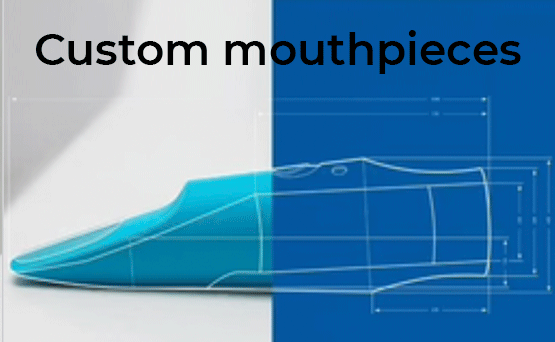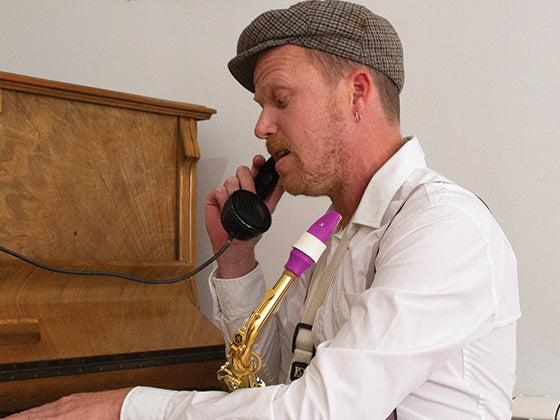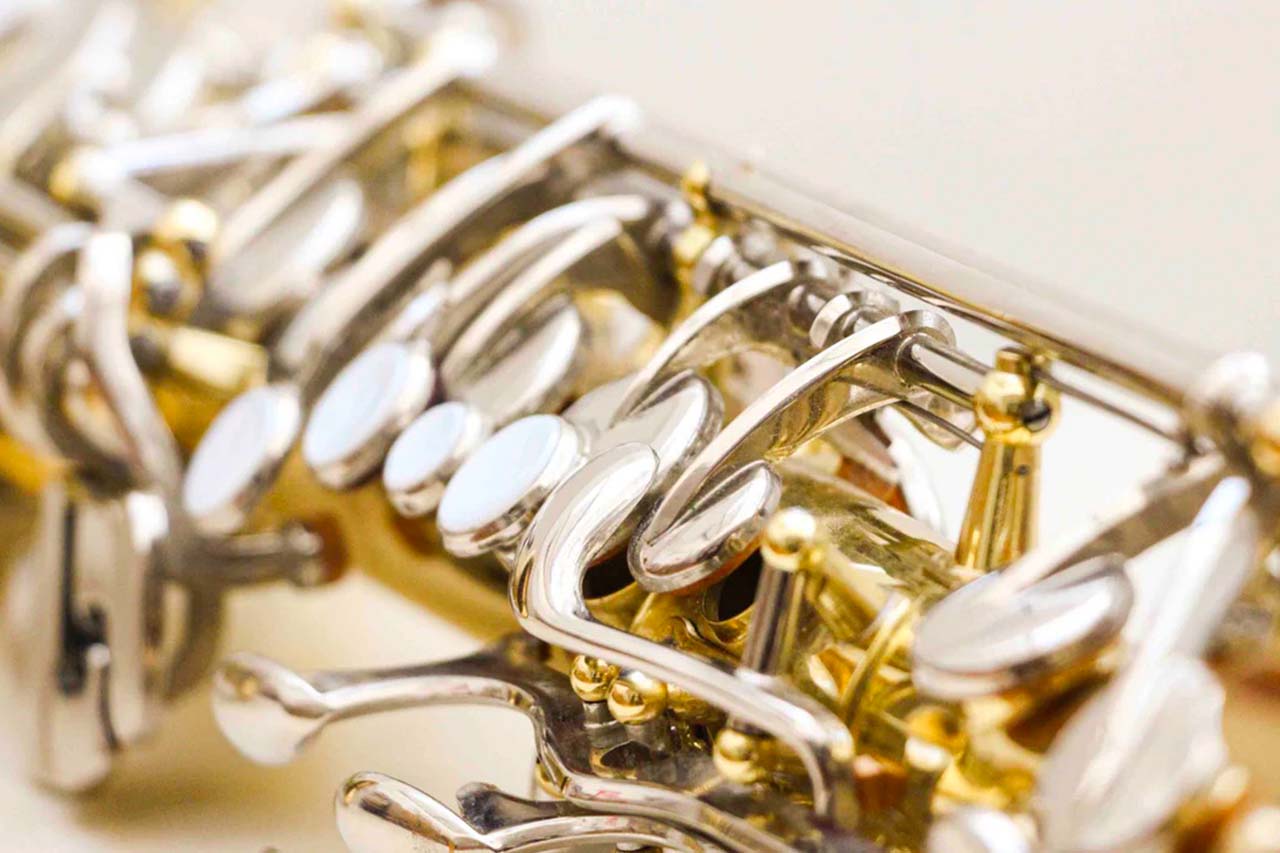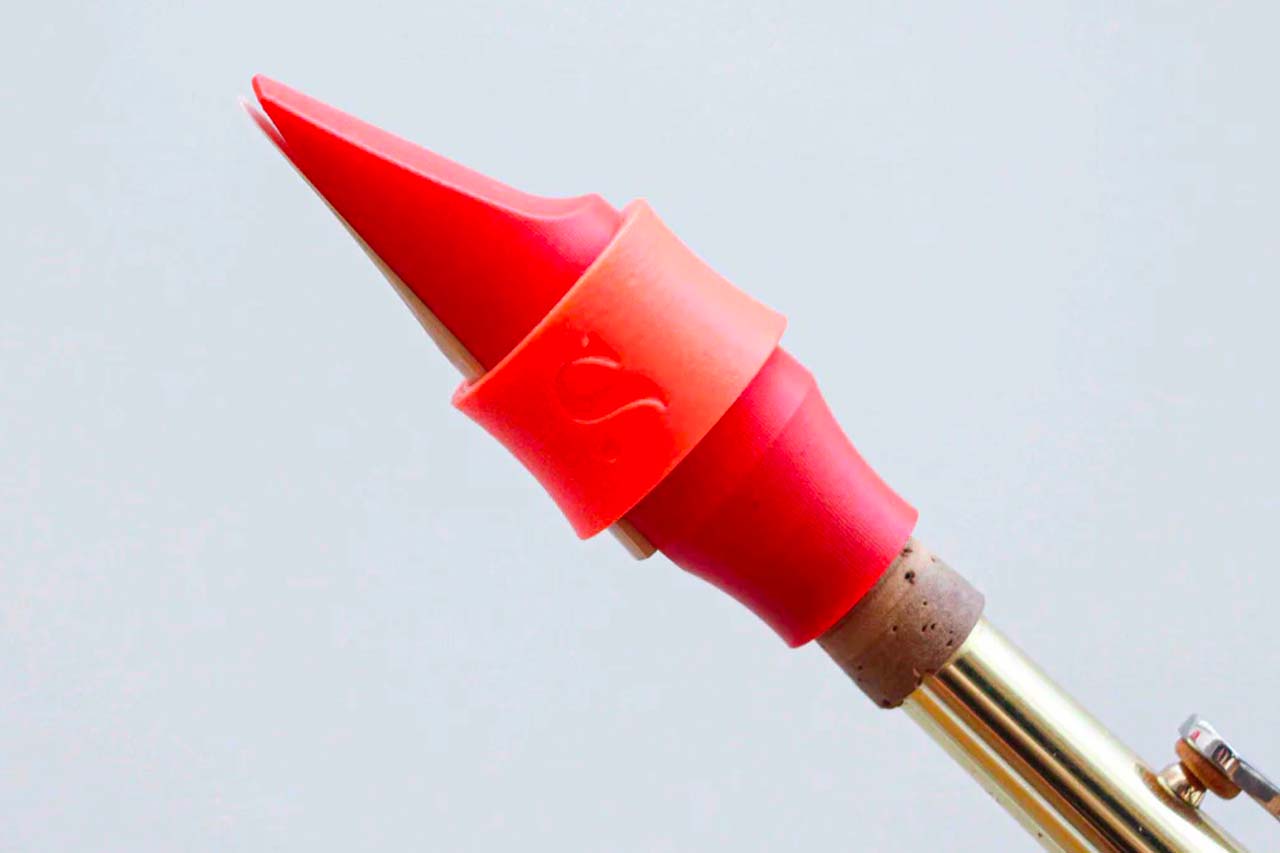From an outsider's perspective, saxophonists' hygiene routines seem far from perfect: we lick the reed, sometimes even the cork of the neck, we put our lips on a far-from-pristine mouthpiece, we blow, we splutter, we breathe ... Also, the saxophone and its gear are subjected to trials of their own: dust, humidity, parched cork, precarious storage situations ... In short, for your own good, and that of your saxophone, here is a guide to maintaining your instrument.
What you need for the perfect saxophone maintenance routine:
The swab: this is a piece of cloth (often chamois) with a weight at the end of a string. It allows you to easily clean inside the saxophone body and neck. Choose two swabs: a large one for the saxophone body and a small one for the neck and the mouthpiece (Here is the anatomy of the saxophone!).
The tripod: aka "stand", it allows you to put your saxophone down, holding it by the bell. No keys are put under pressure and it's the best way to keep your saxophone mounted safely. They are available for all types of saxophone.
Grease: this is necessary for the maintenance of the corks and the lubrication of various parts of the saxophone.
Cigarette paper: it can help to prevent the pads from sticking and compensate for worn cork that has become too thin for the mouthpiece.
The luthier: Yes, a good luthier will give your saxophone a new lease of life! (Here's our list of Syos repairman partners!).

The mouthpiece
It is vital that you look after your saxophone mouthpiece. It is a piece that is prone to wearing and gets dirty quickly and on a regular basis. Regardless of the material, it is important to pass the swab through it after each use to ensure that the mouthpiece is dry.
For a deeper clean, the material must be taken into account. No need to worry with Syos mouthpieces as you can wash them with hot water and soap. Ebonite and metal can't stand the heat (or wet) and can tarnish or turn a peculiar shade of green. So, use a soft toothbrush to clean the inside of these mouthpieces. Wipe and dry them after cleaning.
Top tip: To reduce the damage caused by your teeth, we recommend that you place a protective cushion on the beak of your mouthpiece (you can read our article about the mouthpiece anatomy.

The reed
The reed also needs a little time to dry and its own little rag. This process of drying essentially determines its lifespan. It is imperative that you remove it from the mouthpiece and dry it flat, in its reed guard or in a special case. This stops the end from curling and making the reed weak after only a few uses. Some suggest leaving it in a humid environment so that it never dries, but beware of mold!
Top tip: To give a second life to your reed, you can also use a reed cutter. Otherwise, there are some very good carbon reeds, long-lasting and easy to maintain.
The neck
And now for the pipes! The saxophone's neck needs to be wiped after every use, inside and out. Use the small swab to clean inside: sliding it through until the pipe is dry. The chamois skin of the swab can then be used to polish the exterior.
As for the cork, maintain it by adding fat. This prevents the cork from drying and crumbling, the fat essentially feeds the cork. Do not hesitate to grease the other end of the neck if you have trouble placing it on the body of the saxophone.
Top tip: use cigarette paper to compensate for worn cork as a temporary fix for a snugger fitting mouthpiece (before seeing a luthier to repair the cork).
The saxophone body
It is now the turn of the big swab and the big pipes. We recommend you insert it through the bell and then continue through the tube. And not the other way around because the swab often gets stuck in the keys. Once again, the chamois skin can be used to polish the saxophone exterior. Some pads can stick whilst you're playing which is often due to them not drying properly. In this case, cigarette paper can help. Slip it under the pad and press the key that plugs that particular hole. Repeat until the pad stops sticking and discard the paper.
To prolong your saxophone's life, avoid all possible shocks (falls, impacts). Any dents could change the air flow and therefore deteriorate the instrument's sound. Once you've finished practicing, you should store your saxophone in a case, leave it on a secure stand, or put it on a flat surface (key side up!).
Top tip: When cleaning your saxophone, keep it attached to the strap. However, unless you are using it, remove the strap as it could scratch and dent the metal.
To conclude on saxophone hygiene
For a long sparkling life, your saxophone needs to be pampered and spared from mold and technical problems. There are many other techniques for looking after your saxophone. However, don't try and do any heavy duty maintenance work. A luthier will be able to best advise you and repair your saxophone more reliably. Clean the mouthpiece, the neck and the saxophone body after each use. And do not forget to close your saxophone case before traveling (and yes, we all forget sometimes)!
To sum up, after each use of your saxophone we recommend you:
-
Dry the mouthpiece with a swab and put the reed in its protective box
-
Pass the swab through the neck and the body of the saxophone
-
At best: put the saxophone in its case to avoid dust. If not leave it on its stand or place it guard side down, and not key side.
See our products :













